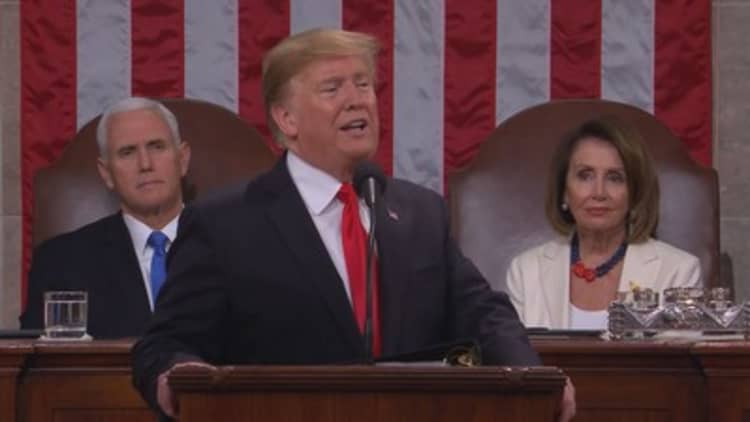President Donald Trump gave a ringing endorsement for federal paid family leave at his second annual State of the Union address on Tuesday. Many Americans are not so sure.
A recent poll shows that public support mostly depends on one thing: how much it will cost.
"I am also proud to be the first president to include in my budget a plan for nationwide paid family leave, so that every new parent has the chance to bond with their newborn child," Trump said in his address on Tuesday.
Trump did not elaborate on details in his address. In last year's annual budget, the president called for six weeks' paid family leave for new mothers and fathers.
Most Americans — 74 percent — support 12 weeks of federal paid family leave for new parents or individuals with medical conditions, according to a recent survey from the Cato Institute, a Washington, D.C.-based think tank.
The support drops, however, once costs are mentioned. Cato's survey found that 54 percent of individuals support a federal paid leave program if it meant they would have to pay $200 more in taxes per year. That falls to 48 percent if they had to pay $450 more in taxes annually and dips to 43 percent if their tax bill increased by $1,200 per year.
Those cost estimates are based on the Family and Medical Insurance Leave Act, or FAMILY Act. That proposal would cover workers for up to 66 percent of their wages, limited to $1,000 per week, for 12 weeks. The price points were generated using a cost calculator for paid family leave that was developed by the AEI-Brookings Working Group on Paid Family Leave.

Most Americans would not be happy with other ways to pay for federal leave, according to Cato's survey. A large majority — 76 percent — do not want such a program if it means cutting funding to programs such as Social Security, Medicare or education.
In addition, 57 percent said they are against a federal paid leave program if it means increasing the federal deficit.
Data from the Pew Research Center found that most Americans — 62 percent — think that employers should pay for family leave. A much smaller number, 24 percent, said the government — either federal or state — should absorb the costs.
More from Personal Finance:
Medicare for All could take center stage in the 2020 election. Here's what that means
Congress has yet to approve these valuable tax breaks for 2018
Nervous investors cite Washington politics as their top cause for concern, survey finds
The U.S. is one of the few developed countries without a national paid family leave program, according to the Heritage Foundation. Instead, U.S. workers rely mostly on state-based and private paid leave programs.
Research from the Heritage Foundation estimated it would cost $114 billion over 10 years for a paid maternity leave program that would last up to 12 weeks and provide 50 percent to 60 percent of a worker's pay. That price tag would go up to $198 billion over 10 years if 100 percent of pay was provided. Costs would balloon to $231 billion if it included all family medical leave.
Still, there is room for more workers to have access to wages when they take time off to attend to family or medical issues. While 63 percent of workers who took leave in the past two years received full or partial pay, according to Pew's research, 36 percent received no pay at all.


